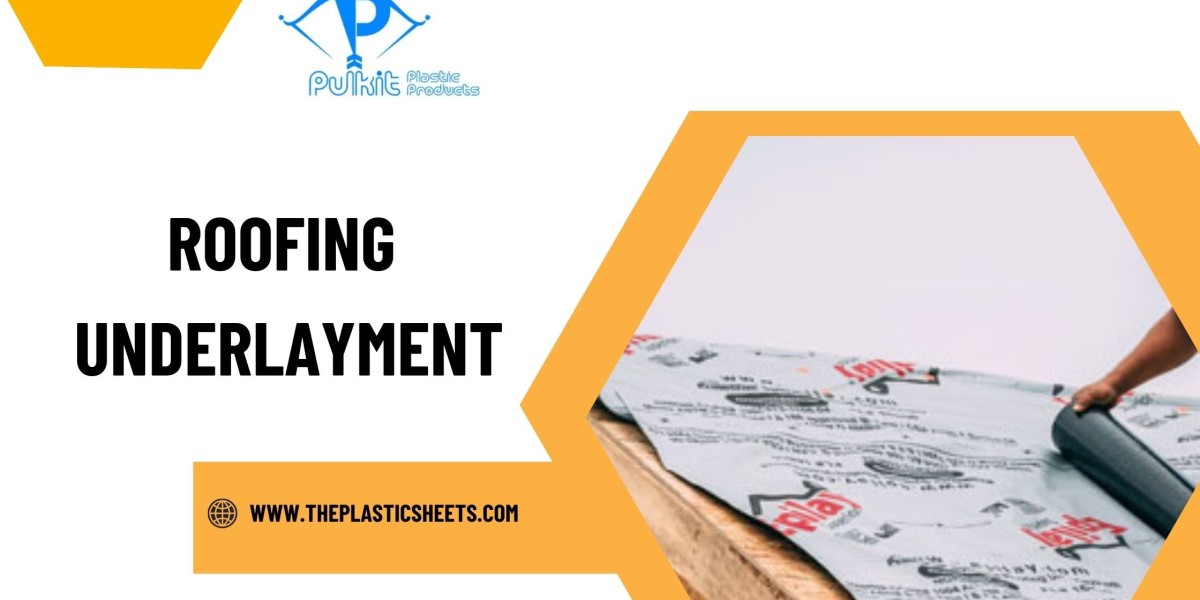Your roof is your home's primary defense against the elements, shielding you from rain, snow, wind, and sun. While the roofing material itself (shingles, tiles, metal, etc.) gets most of the attention, a crucial component working tirelessly beneath the surface often goes unnoticed: the roofing underlayment. This layer, installed directly on the roof deck before the primary roofing material, provides an essential secondary barrier against water intrusion and contributes significantly to the overall lifespan and performance of your roof. This article will delve into the importance of roofing underlayment, exploring its functions, types, installation considerations, and the peace of mind it provides to homeowners.
What is Roofing Underlayment?
Roofing underlayment is a water-resistant or waterproof barrier material installed directly onto the roof deck, beneath the roofing material. It acts as a protective layer, preventing water from infiltrating the roof structure, even if the primary roofing material is damaged or compromised. This is especially critical during severe weather events or when roofing materials age and develop cracks or leaks. Beyond water protection, underlayment also provides a smooth surface for the installation of roofing materials, helps to prevent the roof deck from absorbing moisture, and can contribute to energy efficiency by reflecting heat.
Why is Roofing Underlayment Important?
The importance of roofing underlayment cannot be overstated. Here's a breakdown of its critical functions:
- Secondary Water Barrier: This is the primary role of underlayment. It protects the roof deck and underlying structure from water damage caused by rain, snow, ice dams, or leaks in the roofing material. Without underlayment, water can seep into the attic, walls, and ceilings, leading to mold growth, wood rot, and costly repairs.
- Protection During Construction: Underlayment provides temporary protection to the roof deck before the primary roofing material is installed. This is particularly important if there are delays in the roofing project or if unexpected weather occurs.
- Smooth Surface for Installation: Underlayment provides a smooth and even surface for the installation of roofing materials, ensuring proper adhesion and alignment. This can improve the overall appearance and longevity of the roof.
- Prevents Moisture Absorption: Underlayment helps to prevent the roof deck from absorbing moisture from the roofing material or the environment. This is particularly important in humid climates or when using roofing materials that retain moisture.
- Fire Resistance: Some types of underlayment offer fire resistance properties, providing an extra layer of protection in case of a fire.
- Warranty Requirements: Many roofing material manufacturers require the use of underlayment to validate their product warranties. Using the wrong type or failing to install underlayment can void the warranty, leaving homeowners responsible for costly repairs.
Types of Roofing Underlayment:
There are several types of roofing underlayment available, each with its own advantages and disadvantages:
- Asphalt-Saturated Felt: This is the traditional and most common type of underlayment. It consists of a felt paper saturated with asphalt to make it water-resistant. Asphalt-saturated felt is relatively inexpensive but is also less durable and less water-resistant than other options. It comes in two common thicknesses: #15 felt (15 pounds per 100 square feet) and #30 felt (30 pounds per 100 square feet).
- Rubberized Asphalt Underlayment: This type of underlayment is made from asphalt modified with rubber polymers, making it more flexible, durable, and water-resistant than asphalt-saturated felt. Rubberized asphalt underlayment is particularly effective at preventing leaks in areas prone to ice dams or heavy rainfall.
- Synthetic Roofing Underlayment: This is a newer type of underlayment made from woven or non-woven synthetic materials, such as polypropylene or polyethylene. Synthetic roofing underlayment is significantly stronger, lighter, and more water-resistant than asphalt-saturated felt. It is also more resistant to tearing, wrinkling, and UV degradation. Because of its superior performance and longevity, synthetic underlayment is becoming increasingly popular among roofing professionals and homeowners.
- Self-Adhering Underlayment: This type of underlayment has an adhesive backing that allows it to be applied directly to the roof deck without the need for fasteners. Self-adhering underlayment provides a superior water barrier and is often used in areas prone to leaks, such as valleys and around chimneys.
Synthetic Roofing Underlayment in Detail:
the all know of Synthetic roofing underlayment represents a significant advancement in roofing technology. Its benefits compared to traditional felt underlayment include:
- Superior Water Resistance: Synthetic materials are inherently waterproof, providing a more reliable barrier against water intrusion.
- Increased Durability: Synthetic underlayments are much more resistant to tearing and damage during installation and exposure to the elements.
- Lighter Weight: Synthetic underlayments are significantly lighter than felt, making them easier to handle and install.
- UV Resistance: They are designed to withstand prolonged exposure to sunlight without degrading, allowing for longer installation times if delays occur.
- Improved Walkability: Many synthetic underlayments have a textured surface that provides better traction for roofers, improving safety during installation.
Roof Underlayment Installation:
Proper Roof underlayment installation is crucial to ensure its effectiveness. Here are some key considerations:
- Surface Preparation: The roof deck must be clean, dry, and free of debris before installing underlayment.
- Overlap: Underlayment should be overlapped according to the manufacturer's instructions. Typically, a minimum overlap of 2-4 inches is required.
- Fasteners: Underlayment should be securely fastened to the roof deck using nails or staples with plastic caps.
- Sealing: Seams and penetrations should be sealed with roofing sealant to prevent water intrusion.
- Local Codes: Always comply with local building codes and regulations regarding underlayment installation.
Waterproof Roofing Underlayment:
For maximum protection against water damage, especially in areas with harsh weather conditions, Waterproof roofing underlayment is highly recommended. Rubberized asphalt and self-adhering underlayments are excellent choices for providing a completely waterproof barrier.
The Role of Companies like Pulkit Plastic Products:
While Pulkit Plastic Products might not be directly involved in the manufacture or installation of roofing underlayment, companies like them play a vital role in the broader construction and building materials supply chain. They may manufacture raw materials used in the production of synthetic underlayment, or they might be involved in the distribution of these materials to roofing manufacturers or contractors. Their expertise in plastic products and materials can contribute to the development and availability of high-quality roofing underlayment solutions.
Conclusion:
Roofing underlayment is a critical component of any roofing system, providing essential protection against water damage and contributing to the overall lifespan and performance of the roof. Choosing the right type of underlayment and ensuring proper installation are crucial for protecting your home and investment. Whether you opt for traditional asphalt felt or the more advanced synthetic options, investing in quality roofing underlayment is a smart decision that will pay off in the long run. By understanding the importance of this often-overlooked layer, homeowners can make informed decisions to safeguard their homes and enjoy peace of mind knowing their roofs are well-protected.
FAQ
Q: Do I really need roofing underlayment?
A: Yes, roofing underlayment is essential for protecting your home from water damage and ensuring the longevity of your roof. It is a small investment that can save you thousands of dollars in costly repairs down the road.
Q: Can I install roofing underlayment myself?
A: While it is possible to install roofing underlayment yourself, it is recommended to hire a qualified roofing contractor. Proper installation is crucial to ensure the underlayment is effective.
Q: How long does roofing underlayment last?
A: The lifespan of roofing underlayment depends on the type of material and the climate. Asphalt-saturated felt typically lasts 10-20 years, while synthetic underlayment can last 20-30 years or more.










